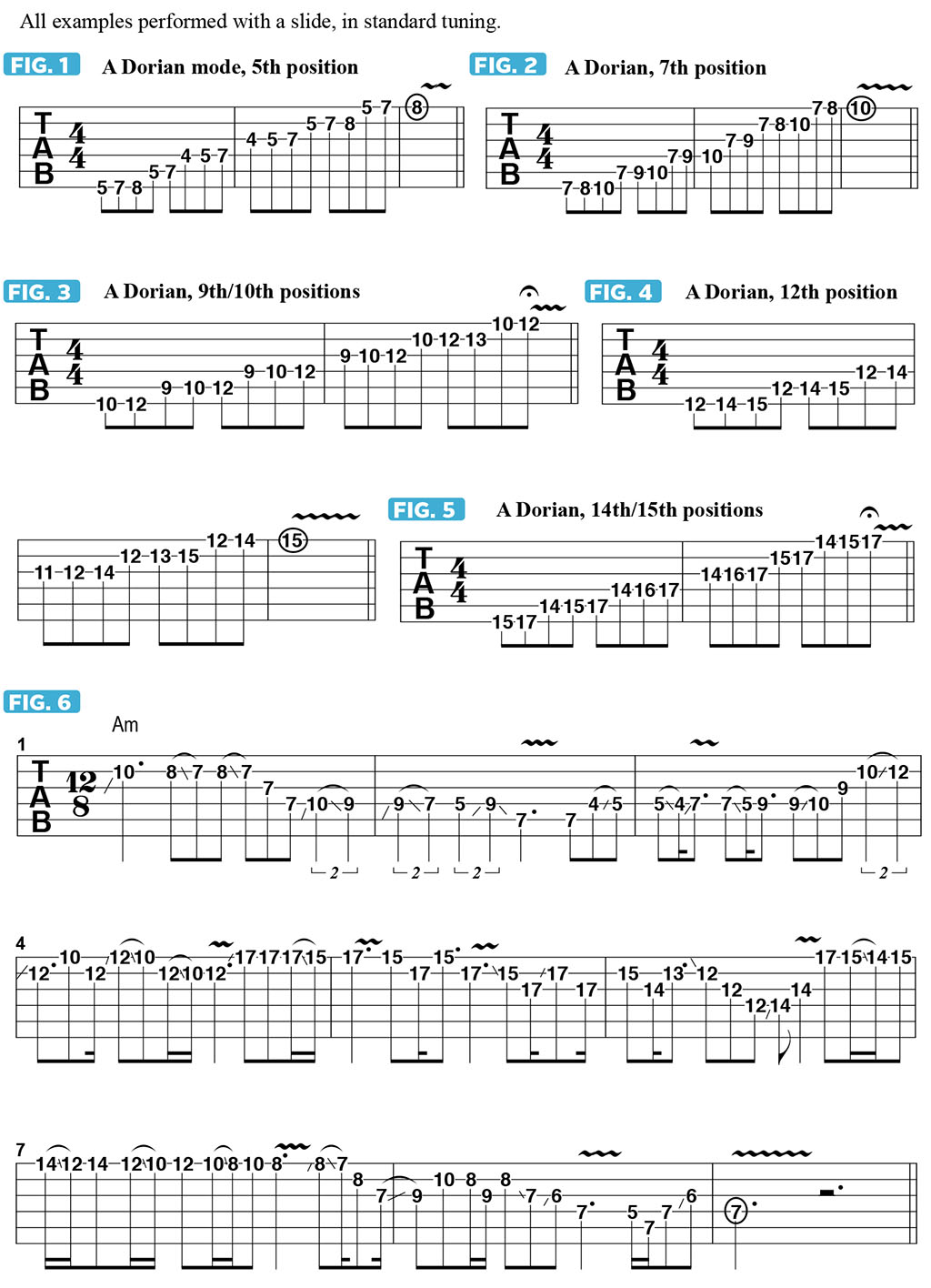A Guide to Modal Slide Soloing in Standard Tuning
It's super useful to familiarize oneself with modal scale positions and patterns and learn how to navigate them with the slide.
One of the benefits of playing slide in standard tuning, as opposed to one of the more commonly used open tunings, is that all of your learned notes, scale positions and chord shapes will remain familiar to you. The tradeoff is that, when in standard tuning, one cannot simply lay the slide across all six the strings to form an open chord, as can be done with an open tuning. Likewise, there are many standard slide licks that became staples of slide soloing specifically because of the open tuning used. For example, when playing in open E or D tuning, or in open A or open G, laying the slide across the top three strings at the same fret will give you a major triad, which is not the case in standard tuning.
I encourage all aspiring slide players to study slide guitar in both standard and in open tunings, because each approach will yield very specific and useful options when soloing. Most of the slide guitar soloing we hear is within the context of blues and blues-rock, wherein the scales used most often are minor pentatonic and the blues scale. While the use of these scales is essential to slide soloing (and blues and blues-rock soloing overall), it is very useful to familiarize oneself with modal scale positions and patterns and learn how to navigate them with the slide.

One of the most commonly used modes in blues and rock is the Dorian mode, spelled intervallically: 1(root) 2 b3 4 5 6 b7. FIGURE 1 illustrates the A Dorian mode (A B C D E F# G) played in fifth position. First play the scale without the slide, fretting the notes normally, then play it with the slide. Remember to keep the slide centered over the fretwire to achieve proper intonation. Also, when sounding each scale degree, stopping the note from ringing is just as important as starting the note ringing, so be sure to mute each note before moving on to the next one!
FIGURES 2-5 illustrate A Dorian played higher up the fretboard, in various positions. As with the previous example, play through each scale pattern first without the slide then with it.
FIGURE 6 presents an eight-bar slide solo based on the A Dorian mode, played over a backing track along the lines of the classic Allman Brothers Band song “Whipping Post.” The solo begins in 10th position but quickly moves down to seventh, followed by an ascent back up to 10th, 12th and 17th positions. Throughout the solo, I chose to emphasize the use of the upper tensions or extensions of the mode, namely the major ninth, B, the suspended 11th, D, and the 13th, F#. Take note of the sound of these upper tensions when playing through this solo, as compared to the Am7 chord tones of A, C E and G.
Get The Pick Newsletter
All the latest guitar news, interviews, lessons, reviews, deals and more, direct to your inbox!
Guitar World Associate Editor Andy Aledort is recognized worldwide for his vast contributions to guitar instruction, via his many best-selling instructional DVDs, transcription books and online lessons. Andy is a regular contributor to Guitar World and Truefire, and has toured with Dickey Betts of the Allman Brothers, as well as participating in several Jimi Hendrix Tribute Tours.
“There are so many sounds to be discovered when you get away from using a pick”: Jared James Nichols shows you how to add “snap, crackle and pop” to your playing with banjo rolls and string snaps
Don't let chord inversions bamboozle you. It's simply the case of shuffling the notes around








![Joe Bonamassa [left] wears a deep blue suit and polka-dotted shirt and plays his green refin Strat; the late Irish blues legend Rory Gallagher [right] screams and inflicts some punishment on his heavily worn number one Stratocaster.](https://cdn.mos.cms.futurecdn.net/cw28h7UBcTVfTLs7p7eiLe.jpg)


